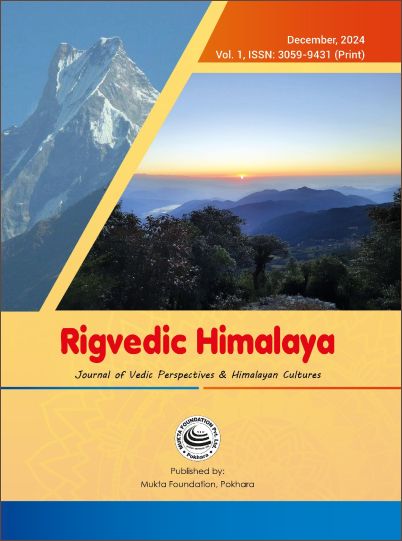Symbolic Meaning of Disasters: Appeasing Malevolent Spirits through Ritualistic Practices in the Himalayan Community
DOI:
https://doi.org/10.3126/jorh.v1i1.75191Keywords:
Cosmology, Culture, Disaster, Nature, Ritual, SymbolismAbstract
This paper examines how a community affected by a flood disaster found unity and meaning through ritual practices, aiming to understand the complex nature of such catastrophic events. The floods that devastated Chame village in the central Himalayan region of Nepal between May and June 2021 prompted the local community to organize a four-day ritual designed to cleanse the negative influences and misfortune caused by the disaster.
By maintaining sacred spaces, engaging in worship practices, intertwining nature with personal and communal existence, constructing protective shrines, and performing various rituals, the community exemplifies the intricate relationship between nature and culture. This study is based on ethnographic fieldwork conducted from June 2021 to October 2022, which included participation in the four-day ritual, informal discussions, and interviews with flood survivors, community leaders, and participants in the ritual practices. The findings reveal that disasters unveil a symbolic dimension that highlights the complex interactions among individuals, communities, nature, and culture. Rituals, in particular, emerge as a powerful force with significant implications for both individuals and the community, reshaping societal dynamics in the aftermath of disaster.
Downloads
Downloads
Published
How to Cite
Issue
Section
License
Copyright (c) 2024 Mukta Foundation Pvt. Ltd

This work is licensed under a Creative Commons Attribution-NonCommercial 4.0 International License.
This license enables reusers to distribute, remix, adapt, and build upon the material in any medium or format for noncommercial purposes only, and only so long as attribution is given to the creator.




